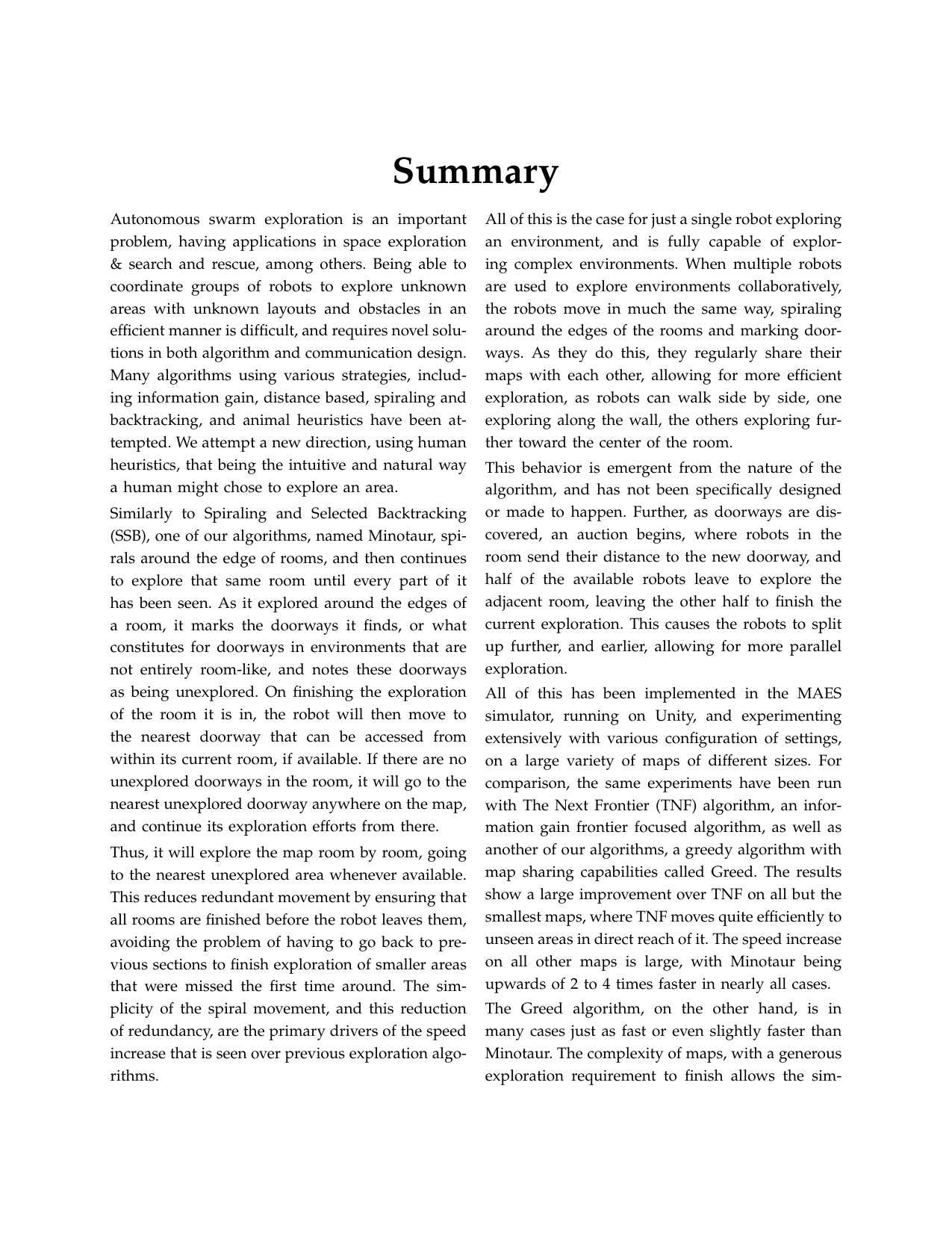
Spiralling Human Heuristics Exploration with doorway detection - The Minotaur Exploration Algorithm
Term
4. term
Education
Publication year
2024
Submitted on
2024-05-31
Pages
20
Abstract
Exploration of unknown environments is important for the versatility of autonomous robot swarm systems. The faster they can fully explore an area, the faster a coordinated plan can be made, or points of interest found. This has applications in fields like space exploration and search and rescue. Previous algorithms have often focused on frontier based, or nature-inspired heuristics. We present a human-heuristics based exploration algorithm, Minotaur, that enables simple and efficient exploration of static buildings. The algorithm follows walls to discover rooms and doorways, after which it follows the previously explored area as marked on a SLAM map. On finishing exploration of a room, robots continue through the nearest unexplored doorway. Multiple robots share these maps and doorways, and can communicate to split up during their exploration efforts to reduce redundant exploration, while enabling fast exploration through both designed and emergent behavior. Comparative experiments have been run in the MAES simulator, comparing with both TNF and a greedy approach. These show an improvement over the previous algorithms, particularly when the algorithms are limited in their communication. Minotaur spends about 1/2 to 1/4 of the time to explore a map compared to TNF, while being slightly faster than Greed in some cases. There is a clear trend for more agents to further improve the speed of Minotaur in comparison to Greed, showing the applicability of Minotaur in systems using a large amount of robots.
Keywords
Documents
